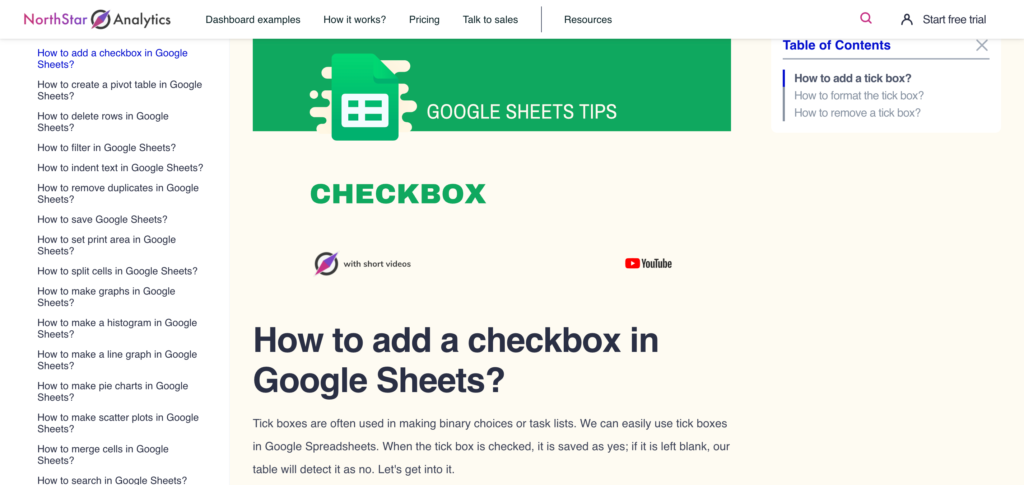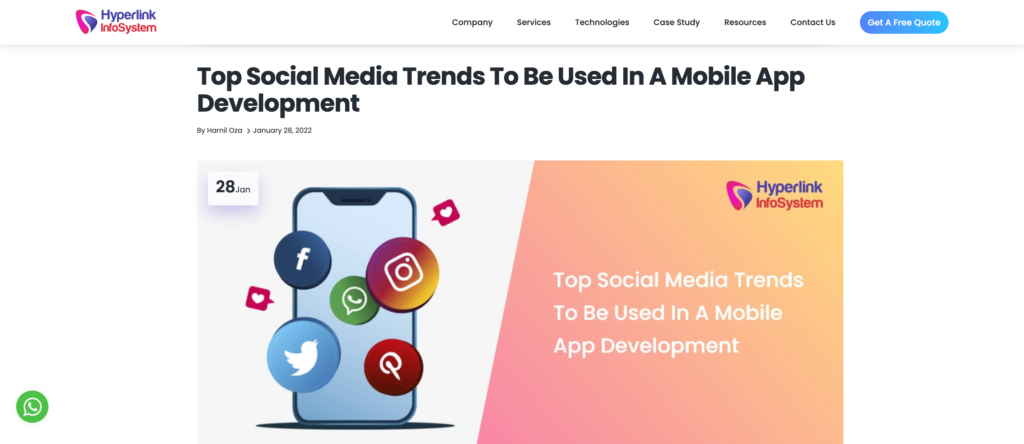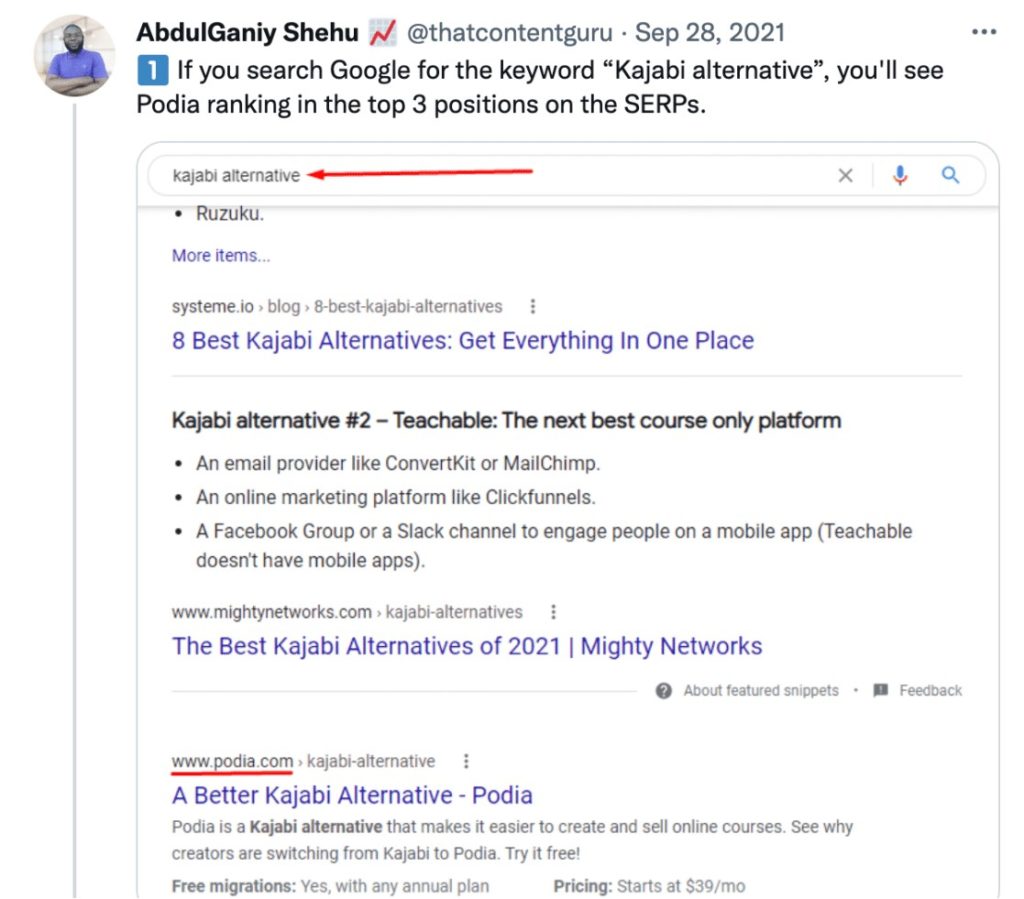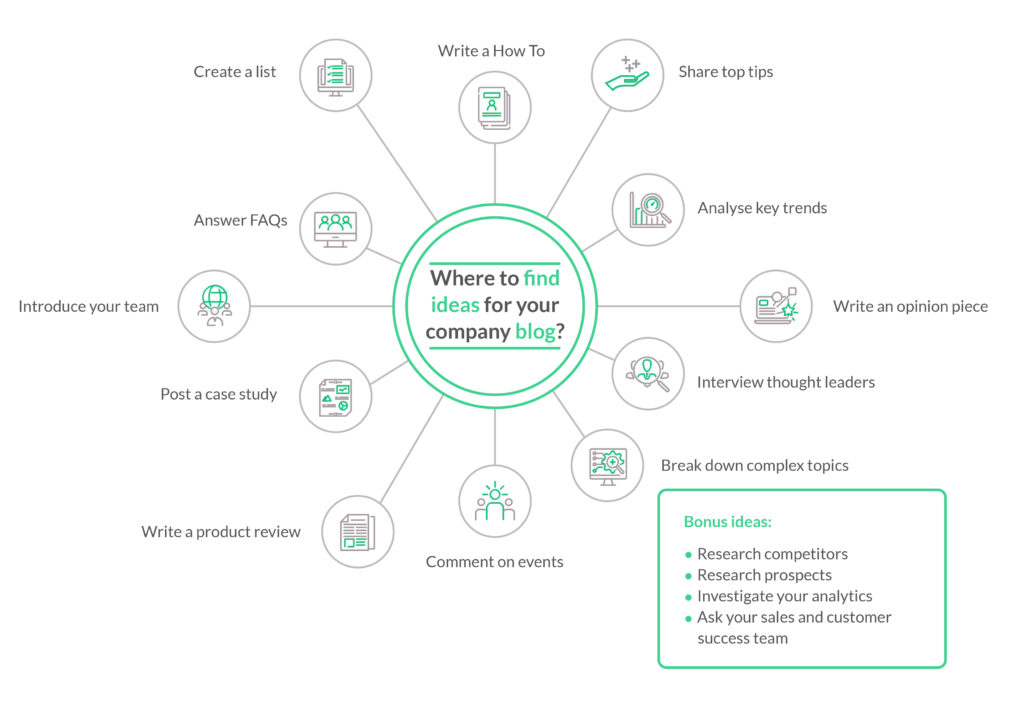In the age of TikTok and the Metaverse, does your IT company need a blog anymore?
Absolutely.
Shinier toys will always exist – but the right blog content will keep delivering leads for you, directly on your website. In fact, creating and maintaining a blog brings with it a whole host of business benefits to consider.
However, having the resources to create blogs for your IT company can be a challenge. In fact, 52% of businesses struggle to find time to create and promote content.
So here are some effective blog topics for IT companies, with examples of the best blog post ideas to help inspire you along the way. By the end of this handy guide, you should have a much clearer idea of:
- Why you should start a blog for your IT or technology company
- The best blog topics for IT companies and how to find them
- How to implement your IT blog post ideas and start blogging!
Why start a blog for IT and technology companies?
Increase your conversion rate
Creating authoritative and engaging B2B blog posts will establish your company as the go-to-experts and help generate leads. On average, 53% of prospects consume 3-5 pieces of content before contacting a salesperson.
For IT companies, this is especially important – as your target audience may not be tech-savvy and will need accessible content that meets them where they are to communicate how you can help solve their problems.
Deliver long term results
The big advantage of a blog is that it has a long shelf life, especially if you’ve put in the work for SEO. In other words, a blog can keep delivering you leads months, if not years, after you’ve published it.
Evergreen blogs are blog posts that stay relevant over time, making them an extremely valuable tool across numerous industries due to their long-term relevance. But what exactly makes the best evergreen content?
Well, Backlinko analysed 3.6 billion articles to better understand evergreen content, and their key findings included:
- List posts and how-to posts are the two “most evergreen” content formats. Presentations and press releases tend to be the least evergreen.
- While tech podcasts might be the latest trend, podcast episodes very rarely get shared over time. In fact, podcasts are 4.28x less likely to be evergreen compared to a list post.
- Content that’s heavily shared on Reddit has a high likelihood of becoming evergreen.
Hopefully this gives you some evergreen blog ideas to get started with!
Blogging and content marketing boost SEO
Blogging works wonders when improving your SEO, AKA making it easier for your prospects to find you. In fact, relevant blog content can increase your organic traffic by up to 106%.
Simply put: not all of your customers will land directly on the service pages of your website. Your audience doesn’t always know the solution to their problem, they just know their problem.
So when they head to Google, they are often searching for informational and educational content that can provide them with the expert solution they’re looking for – not necessarily ‘IT services‘. It’s your blog’s job to bridge that gap.
Blogging gives you the unique ability to target the queries people are actually making on search engines and then use your content to illustrate why you have the best solution for their problem.
Tech blogs help you create an authoritative voice
The IT industry is fast-paced and constantly evolving, and any successful business owner in this space needs to build some sort of authority in their niche.
This not only helps to build trust with potential clients but also positions your business and builds brand awareness as a thought leader in the IT field. Additionally, having an authoritative blog can improve your company’s reputation and credibility, making it easier to attract high-quality clients.
Diversify marketing with multiple channels
Having a blog gives your company an additional marketing channel to reach potential clients. By having a presence on various platforms, such as social media and search engines, you are diversifying your marketing efforts and increasing the chances of reaching new leads.
Furthermore, by sharing your blog content on different channels, you can attract a wider audience and drive more traffic to your website, further proving your authority to search engines.
Stay on top of tech industry trends and tech news
Forbes Report: 10 Biggest Business Trends For 2024
Not only does blogging help you communicate the latest tech trends and news, but it can actually help your team stay on top of these developments. By regularly researching and creating free educational resources on industry topics, your team will also be constantly learning and staying up-to-date with the latest innovations in the tech sector.
Plus, by incorporating this knowledge into your blog posts, you can further establish your company as an expert in the field and attract more clients who are looking for cutting-edge solutions to their problems.
12 examples of blog topics for IT companies
1. How To’s
The fastest way to a prospect’s heart is to help them solve a technical issue quickly and easily. NorthStar Analytics, for example, has completely embraced that strategy by creating a resource dedicated to Google Sheets tips.

You might be thinking “but if I give away all of my secrets, why would the prospect hire me?”
Yes, it might feel counterintuitive, but sharing how-to’s increases your credibility and makes it actually more likely that prospects will hire your services, and therefore save themselves the time and the headache.
2. Share top tips
A sibling to the “How To” type of blog post, top tips tend to be less about the technical nitty gritty and more about high level advice for decision makers.
For example, HData Systems regularly shares posts like this one which shares advice on connecting business intelligence to IoT devices.

The advantage of this approach is that it gives the reader enough information to understand the steps they need to take, but also makes them hungry to reach out to you for help implementing it.
3. Analyse key trends
Reacting and analysing key trends is a great way to establish authority and create content that will rank highly in search results. The downside is that unless you regularly update the blog post, it will have a limited shelf life compared to other content.

Hyperlink InfoSystem has found a great middle ground with this piece that is relatively evergreen compared to most trend blog posts. By focusing on how top social media trends can apply to mobile app development, they don’t tie the writing to a particular year or moment.
4. Write an opinion piece
Blog posts are also a great way of injecting some personality into your business. Opinion pieces allow you to expand on a topic close to your company’s values, and help you stand out from the competition.
Digital product creator Intive, for example, wrote this fantastic blog piece on design’s relation to enthusiasm. It’s thought provoking while also showcasing the company’s approach to design.

“Humans buy from humans” is a phrase often repeated, but it’s true.
5. Interview thought leaders
One of the central purposes of having a company blog is to establish your domain expertise, but you don’t have to restrict yourself to your team for this. A useful blog strategy is to call on thought leaders and industry experts to participate in your blog, whether through interviews or guest blogs.
This is a win-win situation for your company and the expert. They get to further establish their credentials, and you get to increase website traffic and boost your image.

For example, software company iTechArt interviewed Jon Hammant, Head of Compute for UK and Ireland at Amazon Web Services on the topic of modern architectures.
Even better, the blog is in fact a transcript of a podcast. By offering multiple media options to visitors, iTechArt increases opportunities for engagement.
6. Break down complex topics
No one likes looking stupid, least of all the C-suite. But here’s the truth, your prospects aren’t necessarily going to be experts in your field.
Instead of assuming knowledge on their part, and alienating them, a fantastic strategy is to break down complex topics without them needing to ask.
By doing so, you become their number one ally.
Take for instance Waracle’s What on earth is Web 3.0? blog post.

The language is accessible and friendly, and it effortlessly explains terms such as Blockchain, DApp, and more.
7. Give your key takeaways on an event or announcement
Not all blog posts need to be evergreen, reacting and analysing events and announcements can also be an effective strategy.
For example, IT company BJSS breaks down the 2021 autumn budget in this blog post to pick out the key tech themes for their audience.

Let’s face it, not everyone has the time to attend every event or listen to every announcement, so these kinds of posts are incredibly valuable for your busy prospects and customers.
And yes, they’re also likely to boost your website traffic.
8. Write a product review
B2B buyers consume an average of 13 pieces of content before deciding on a vendor, and that includes reading reviews.
Writing reviews, whether it’s of a technology or a product, is therefore a clever website traffic growth strategy. Not only will buyers use your blog as a research tool, but if they like the way you present your information, they might also convert into a prospect.
IT outsourcing partner Objectivity uses reviews like this one on Flutter App Development to establish themselves as a trusted voice for their readers.

Alternatively, like Podia, you can use reviews as a strategy to grab your competitors’ prospects from under their nose.

Indeed, by writing a comparison or review of your competitors you can dominate their search rankings.
9. Post a case study
A compelling case study is the perfect way to secure a sale, with 62.2% of eMarketer survey respondents finding them an effective lead generator.
The best case studies not only demonstrate your skills in action, but also put the focus on your happy customer and the great work they do. Unily’s Adecco Group’s case study does just that.

The technology might come from Unily, but they firmly put the spotlight on how their customer has deployed it for company-wide collaboration and inclusivity.
That approach is a win-win for the customer and the company, as it creates a:
- Compelling story rather than a hard-sell and
- Inspires the reader with a great use case with the tech
10. Introduce your team
Who are you, and what do you stand for?
The answer to those big questions can be found in your company culture. If you’re proud of your team and your employer brand, then shout about it! Putting the spotlight on the humans that make up your business will humanise you, and help you recruit new talent.

Tech, data, and experience consultancy Kin + Carta does just that with their Kin+ series. Here for example is their spotlight on Linda Dao Ohr, their Global Head of Sales Enablement, with a story that not only showcases her resilience, but also Kin + Carta’s attitude to health and wellbeing.
11. Answer frequently asked questions
If you’re stuck for inspiration, a good place to start is with your customers’ frequently asked questions. Which questions do your team have to answer time and time again, whatever department they’re working in?
An FAQ blog post will not only make your team happy, as they can point customers to it, but it’s also a sensible SEO strategy.

Answering questions doesn’t have to be about technical hitches either, as demonstrated by SmartDesc’s blog on IT project failure. Their blog might not be a typical FAQ question, but it’s likely to be a common concern of their customers – addressing it head on with sensible and practical advice positions them as the ideal IT company to work with.
12. Create a list
Last but not least, the list blog remains a staple of the blogosphere, and with good reason!
List blogs, sometimes called listicles, work for multiple reasons:
- They’re attractive to readers, as they know in advance what they’re committing to
- They’re practical and useful to readers
- They’re easier to write, as the structure is pre-determined
List blogs are also highly flexible and can lend themselves to all sorts of topics, from listing different ways of handling a project, to a list of top tips, to a list of favourite projects/products.

For example, Unosquare deploys it here to provide advice to their prospects and existing clients, by sharing 6 signs that you’re micromanaging your software development project.
For a different, more practical approach, read our list of 10 LinkedIn inMail templates you can use now. It quickly became our most read blog because the topic will always be useful. After all, who hasn’t struggled to find the right words?
Where can you find ideas for your IT company blog?
If these examples aren’t enough to fire you up, here are a few more ideas for inspiration:
- Read your competitors’ blogs to discover their approach
- Read your clients and prospects’ blogs to understand their priorities and concerns
- Check your website’s analytics to see where your visitors are going. Could you replicate the success of your most popular blog posts?
- Ask your sales and customer service team: what kind of blog content would make their job easier?

How to create your IT blog content journey
Step 1: Plan your IT content strategy
Plan for a series of blogs that provide your readers with a content journey through a certain aspect of your business that they might be interested in. For tech companies, this could include:
- A series of posts around a specific technology (e.g. cloud computing or artificial intelligence)
- A series of posts around industry trends or interesting studies that you can offer a unique perspective on
- A series of case studies and examples from particularly successful projects, with accompanying how-to guides or tips for readers to achieve similar results
- A series of posts around common business challenges that you can solve (and how you do it)
Pop them into a frequent publication schedule (AKA a content calendar!) and you’ll have an organised, engaging and useful foundation for your content strategy.
Step 2: Start writing blogs!
Now that you have your content plan in place, it’s time to start writing those blogs! Here are some tips to help you create engaging and informative IT content:
- Use a conversational tone that resonates with your audience. Avoid overly technical language or jargon that may be difficult for non-experts to understand.
- Incorporate visual elements such as images, infographics, and videos to break up the text and make your content more visually appealing.
- Include links to relevant resources or products on your website. This can help drive traffic and conversions.
- Utilise SEO best practices, such as incorporating keywords into your blog titles and using meta descriptions.
- Promote your blogs on social media and in email newsletters to reach a wider audience.
Step 3: Link between key pieces to keep people engaged
Signpost these key aspects of your business – and other important pieces of content – in your blogs by linking to them, so users can take their time to understand the different perspectives in detail.
By having an internal linking strategy, you can guide readers through your content journey and showcase the various facets of your IT company. This also helps build credibility and thought leadership in your niche.
Diversify your blog with these idea starters, and then build content journeys that offer meaningful insights and help readers address their questions from different perspectives. Your readers will reward you with more time spent on your site, better goal completions and more traffic.
Step 4: Measure and audit for performance
Last but not least, it’s important to regularly measure the performance of your blog content. This can include tracking metrics such as website traffic, social media engagement, time spent on site, and conversions from blog posts.
By auditing your content performance, you can identify areas for improvement and adjust your content strategy accordingly.
Closing thoughts
At Isoline, we specialise in creating engaging and informative content for ambitious B2B companies. Let us help you take your content strategy to the next level today. If you want to find out how Isoline Communications can help you deliver world-class content for your customers, get in touch now at hello@isolinecomms.com.
IT Blog Topics FAQs
What are good topics for a B2B blog?
Some good topics for a B2B IT blog include industry trends, case studies, technology reviews, how-to guides, and common business challenges that can be solved with technology. It’s important to consider your target audience and what they would find interesting and useful.
How do I find blog post topics for tech blogs?
You can find topics and new blog post ideas for tech blogs by researching industry news and trends, reading competitor blogs, analysing your target audience’s interests and pain points, and utilising keyword research tools.
Additionally, you can ask your sales and customer service team for insights on common questions or challenges they encounter from clients. You can also repurpose existing content, such as whitepapers or presentations, into blog posts.
What makes a good tech blog?
A good tech blog is one that provides valuable and relevant information to its target audience. It should be well-researched, engaging, and easy to understand. Incorporating visual elements, utilising SEO best practices, and having a consistent publishing schedule can also contribute to the success of a tech blog.
Finally, a good tech blog should showcase your expertise in the industry and showcase your company’s unique selling points.
Like what you just read?
There’s more where that came from. Sign up to our newsletter to get the latest B2B tech news, content marketing insights, tips, tricks, memes, and more, delivered straight into your inbox every month.



